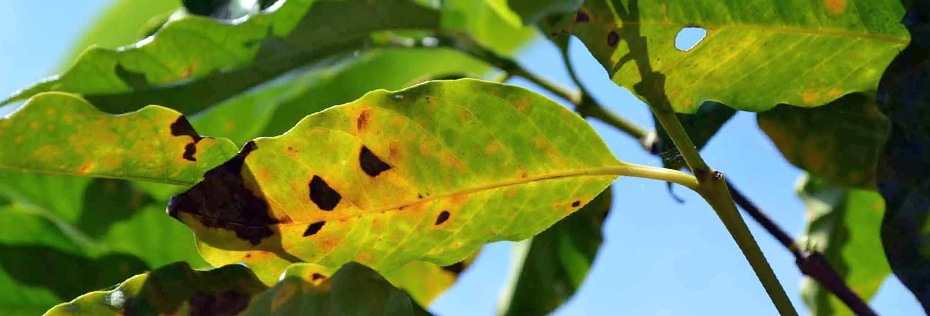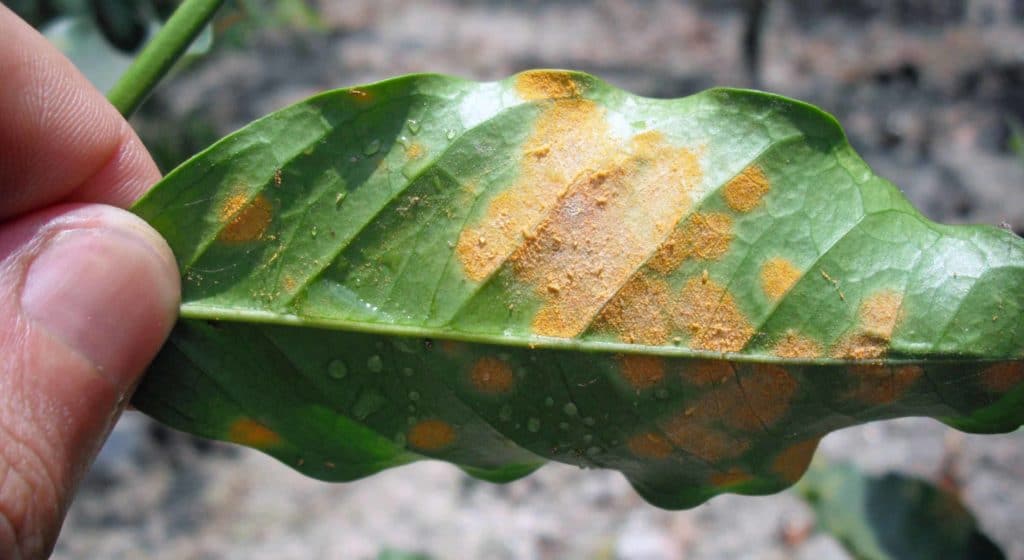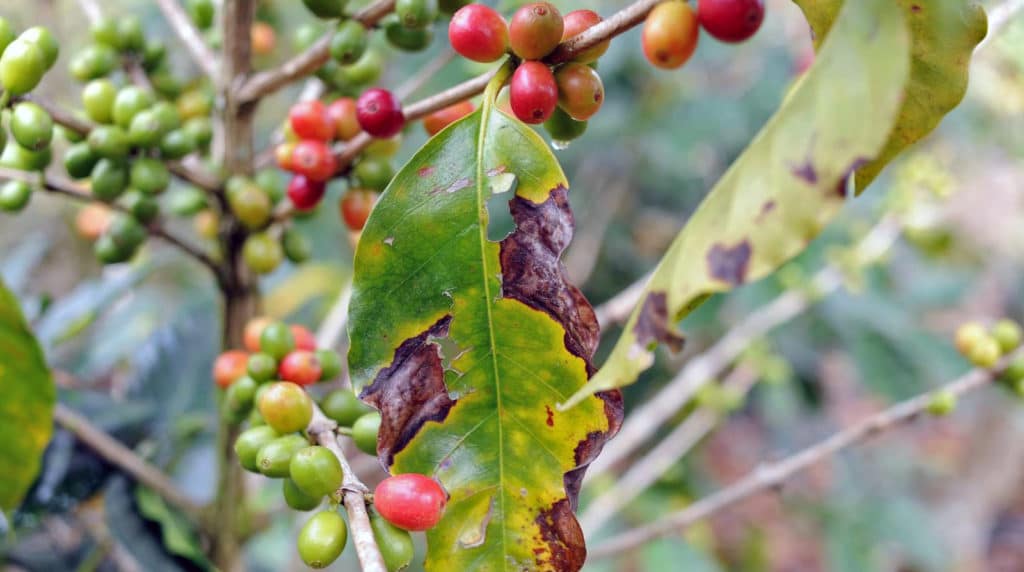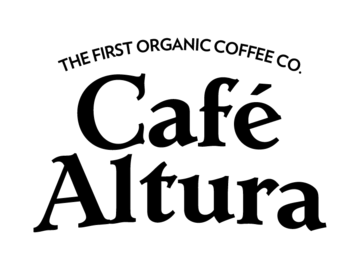
Coffee Leaf Rust and Global Warming
Though coffee leaf rust came to widespread public attention during the Latin American/Carribean epidemic of 2012-13, it has long been an enemy of coffee farmers. Thought to have evolved alongside coffee in Ethiopia, leaf rust was first reported in 1861 near Lake Victoria in East Africa, and coffee farmers have been battling it ever since.
In this blog post, we’re going to dive into that battle. We’ll discuss the history of coffee leaf rust, what it does to the plants it infects, how climate change is affecting the spread of rust, and detail some of the efforts being made to combat it. The future of the coffee industry depends on its ability to deal with the threat rust poses, and this blog post will give some context to that threat.
History of Leaf Rust
The fungus Hemileia vastatrix, commonly known to us as coffee leaf rust, was first identified and named by Reverend H. J. Berkeley in the pages of an 1869 edition of Garnder’s Journal. The spores were identified using dried leaves from coffee plants in Sri Lanka, which at the time was one of the largest and most important coffee growing regions in the world.
By the 1880s, however, leaf rust was so ubiquitous in Sri Lanka that it effectively destroyed the coffee industry there; most farmers gave up and planted tea instead. Over the next 40 years, leaf rust continued its deadly spread across the world, becoming common throughout Africa and Southeast Asia. Strict quarantines kept rust out of South and Central America until the 1970s, when the fungus was discovered in Brazil. From there it spread throughout Latin America, becoming endemic in all the coffee lands save Hawaii by the 1990s. A crucial contributing element to the worldwide spread of rust is the limited genetic makeup of coffee cultivars.
As we have discussed on this blog before, most coffee in the world is descended from two varieties propagated from Ethiopia by way of Yemen; Typica and Bourbon. Typica and Bourbon are extremely susceptible to rust, and because most widely cultivated coffee varieties are closely related to these cultivars, they consequently share their flimsy rust resistance.

How Leaf Rust Affects Coffee Plants
The mechanism of leaf rust is simple; the spores form on the leaves of coffee plants in the presence of free water, and once the leaves are infected, the spores slowly spread, consuming the leaves to further propagate themselves and causing them to fall off the tree in the process. Rust tends to start at the bottom of a coffee tree and move upward, slowly robbing the tree of its leaves as it goes.
The effect that this has on a coffee plant is quite simple as well; the fewer leaves the plant has, the less it can photosynthesize. The less it can photosynthesize, the less energy it has to produce healthy cherries. Since rust most commonly affects coffee in the rainy season as the plants begin to flower, this means that that rust can drastically reduce or, in extreme cases, eliminate a plant’s ability to produce coffee cherries through starving it of nutrients at a crucial stage in its life cycle.
According to coffeeresearch.org, losses from the reduced photosynthetic capacity induced by leaf rust can be anywhere from 15-70%. This level of loss is harmful to farmers of any plant, but is especially problematic for coffee farmers, who largely work small plots of land and live in some of the poorest countries on earth. High losses have the potential to leave farms devastated and farmers destitute, as well as drastically reduce the global supply of coffee.

Coffee Leaf Rust and Climate Change
As if the mere existence of leaf rust were not enough, in recent years the fungus has gained a new ally; climate change. For many years, the barrier which separated leaf rust from many coffee growing regions was the sensitivity of the fungus to cold temperatures; coffee is largely grown at or above 1000 meters above sea level, and nighttime temperatures at elevation are typically cold enough to stave off rust. However, increasingly warm nighttime temperatures brought on by climate change means that rust can now flourish at higher and higher elevations than previously thought possible.
Additionally, climate change has disrupted the traditional balance between wet and dry seasons in the coffee lands; coffee producing regions now have more sporadic rain throughout the year, which, when combined with higher temperatures, increases the size of areas in which rust can spread. The interaction of climate change and coffee production is a complex topic, but the increasingly difficult battle against leaf rust all over the world is clear evidence that continued shifts in climate will bring with them increased challenges in coffee production.
Some great explorations of this topic which extend beyond the scope of this discussion can be found at the following links: https://royalcoffee.com/the-intersection-of-climate-and-coffee-on-finca-huixoc/ , http://www.scanews.coffee/2013/02/15/some-insights-on-coffee-leaf-rust-hemileia-vastatrix/.
Combating Leaf Rust
Considering all which has been said about the challenges leaf rust presents, what is the coffee industry to do? Much is still unknown with respect to climate change, but several avenues forward are clear, and chief among them is the development of rust resistant coffee varieties.
In countries especially hard hit by the recent rust outbreak, this type of research has been underway for some time; varieties like ICHAFE 90 in Honduras and Castillo in Colombia were developed by hybridizing hardier Robusta-descended varieties such as Catimor with traditional Arabicas, the hope being that the resulting offspring would have both the disease resistance and high sensory quality of their forbears.
Though the success of this approach has been demonstrated in the findings of Catholic Relief Service’s Colombian Varietal Cuppings Trial , there is still widespread resistance to hybrid cultivars because of associations with low quality.
As heirloom varieties are increasingly subject to the spread of rust, however, so too is the need for more resistant varieties increasingly clear. To this end the World Coffee Research Organization is currently engaged in a long-term project to develop more such varieties which hybridize disease resistance and sensory quality in order to secure a future for coffee which is both sustainable and delicious.
Additionally, strict farm management practices, including but not limited to regular pruning, proper crop spacing, and using shade trees to protect the coffee when able. Fungicides and fertilizers are also effective at stopping the spread of fungus, or at helping plants affected by rust to grow.
In conclusion, leaf rust is a major threat to coffee production which is here to stay. This post has discussed rust’s long history, the new challenges it brings in light of climate change, as well as a few avenues for combating it. For all the threats leaf rust poses, we are confident that the coffee industry will find ways to survive and thrive long into the future. Until next time.
Article By : Bret Colman, Director of Coffee / Head Roaster, Cafe Altura Organic Coffee
